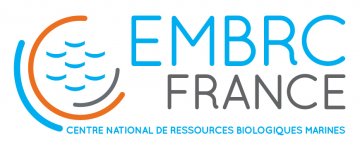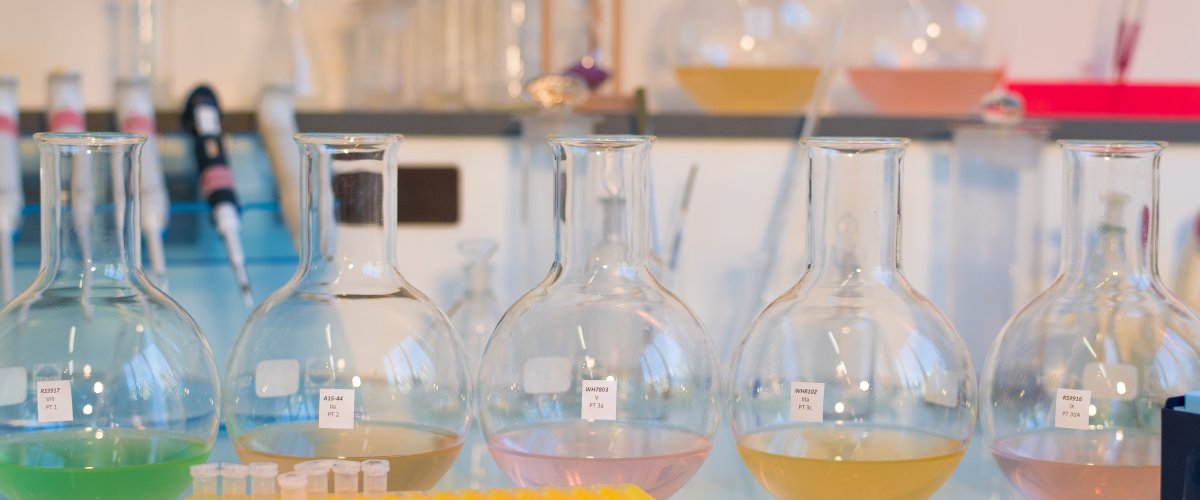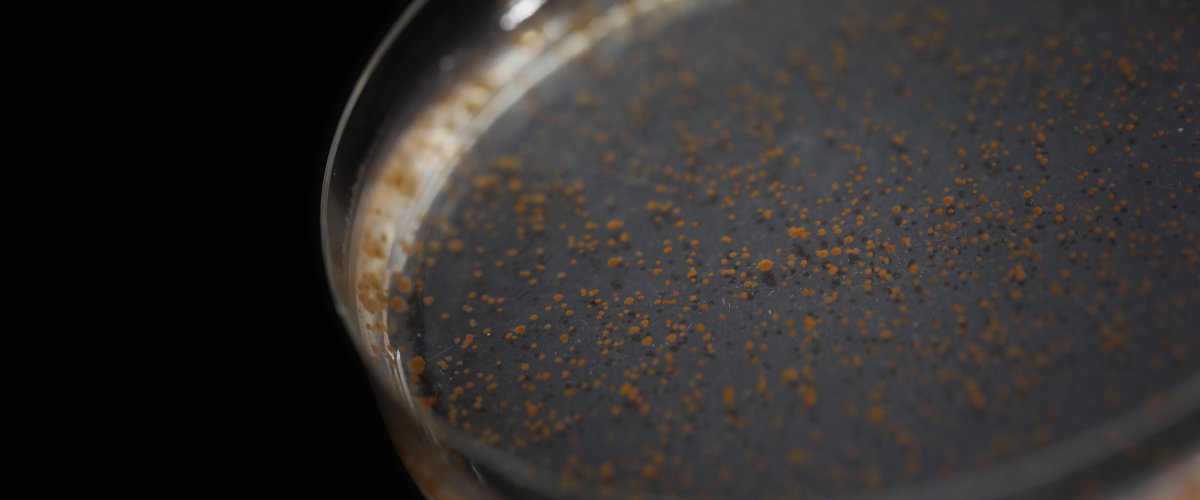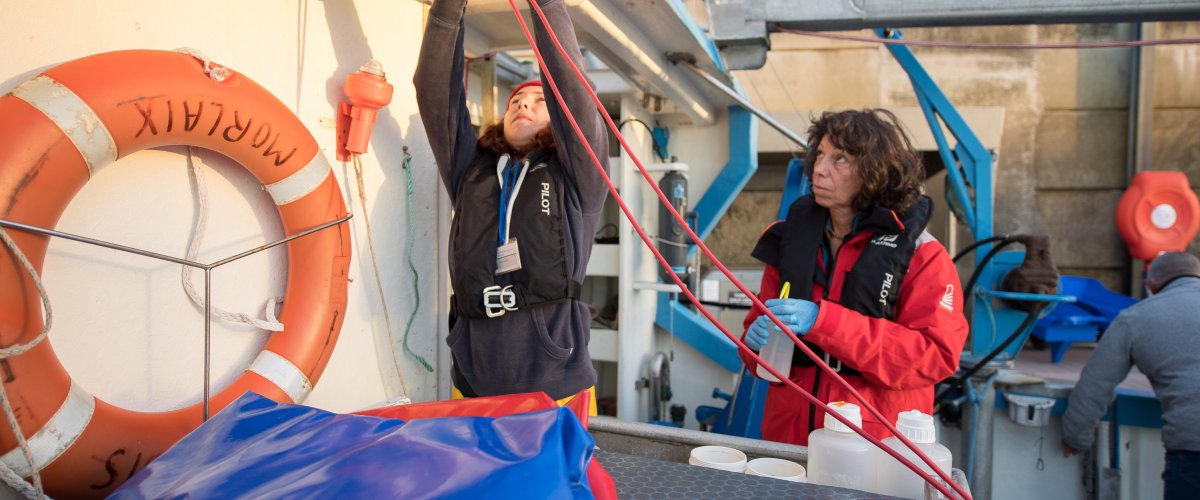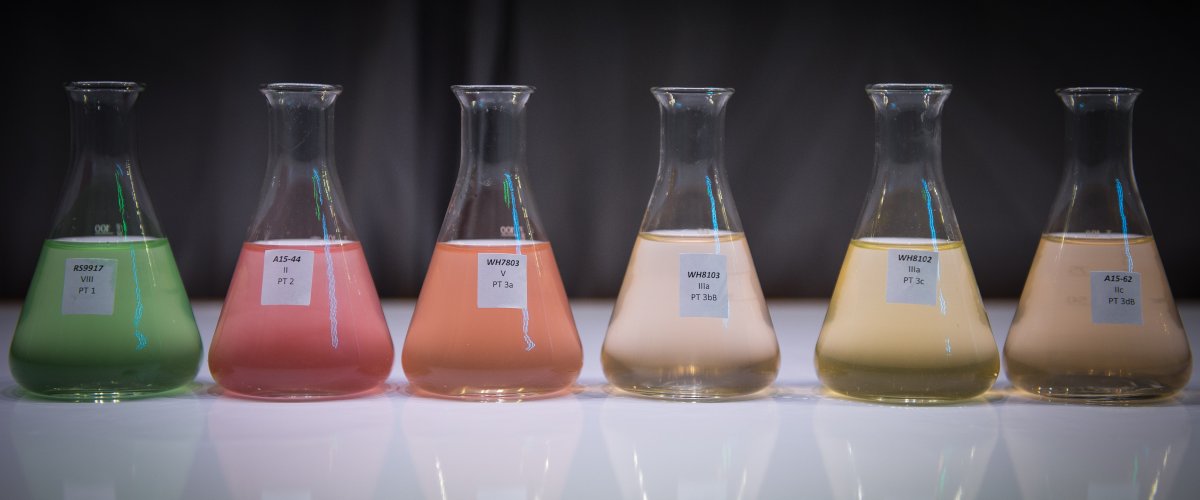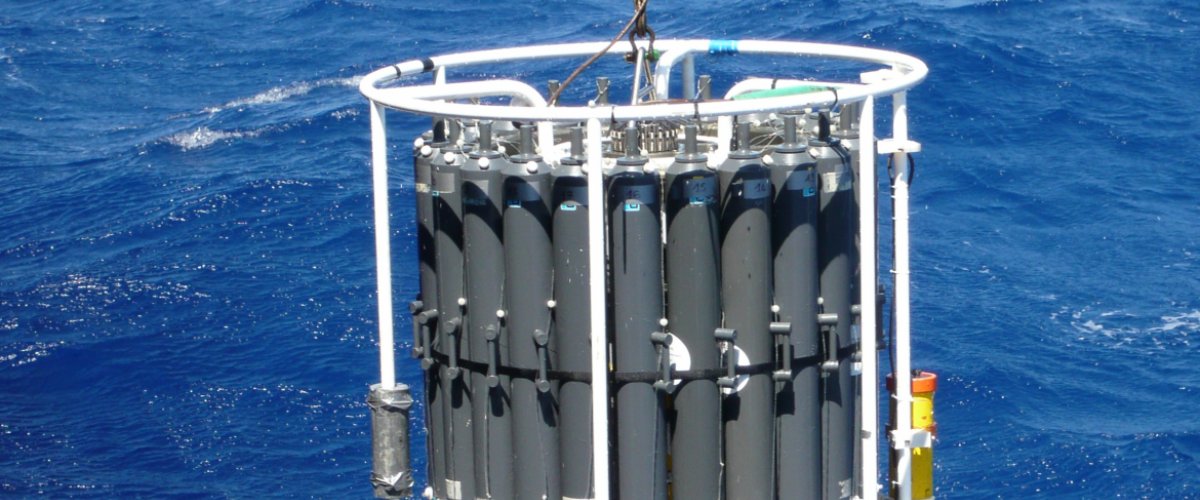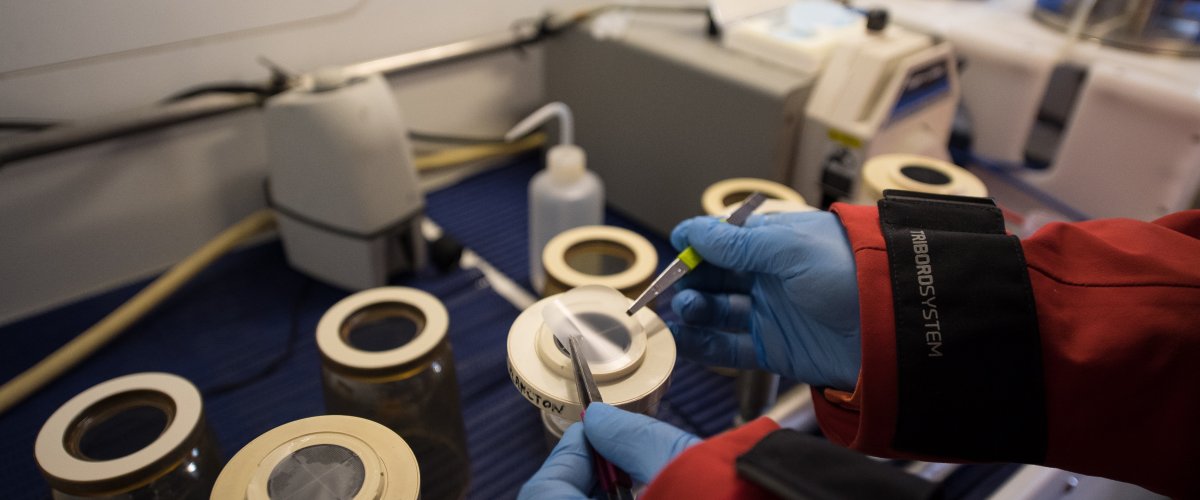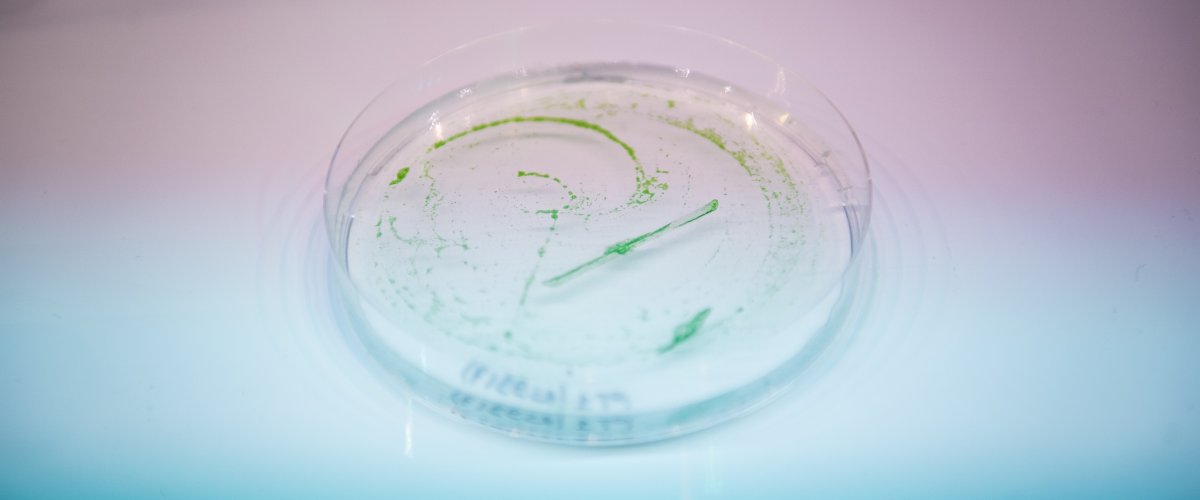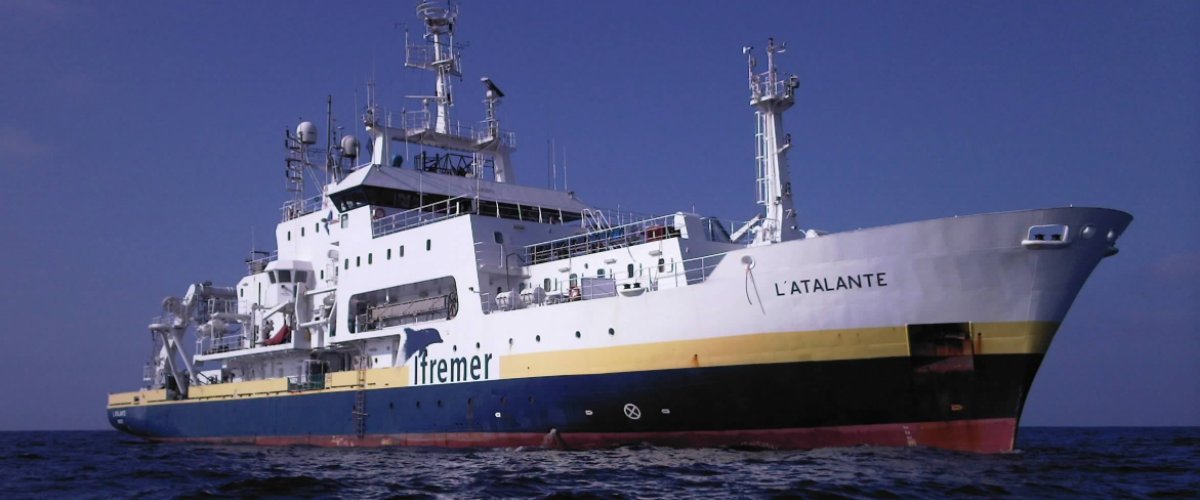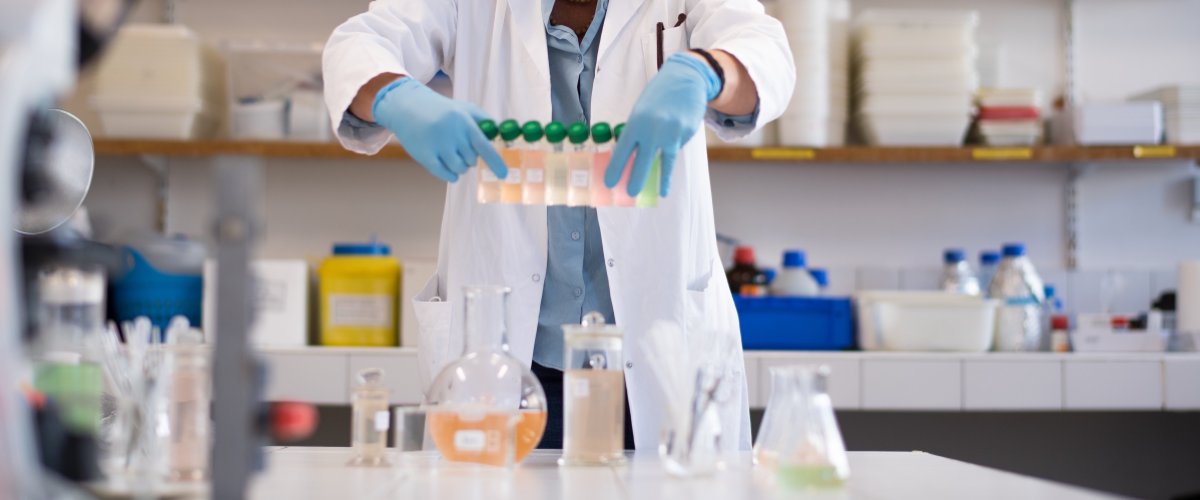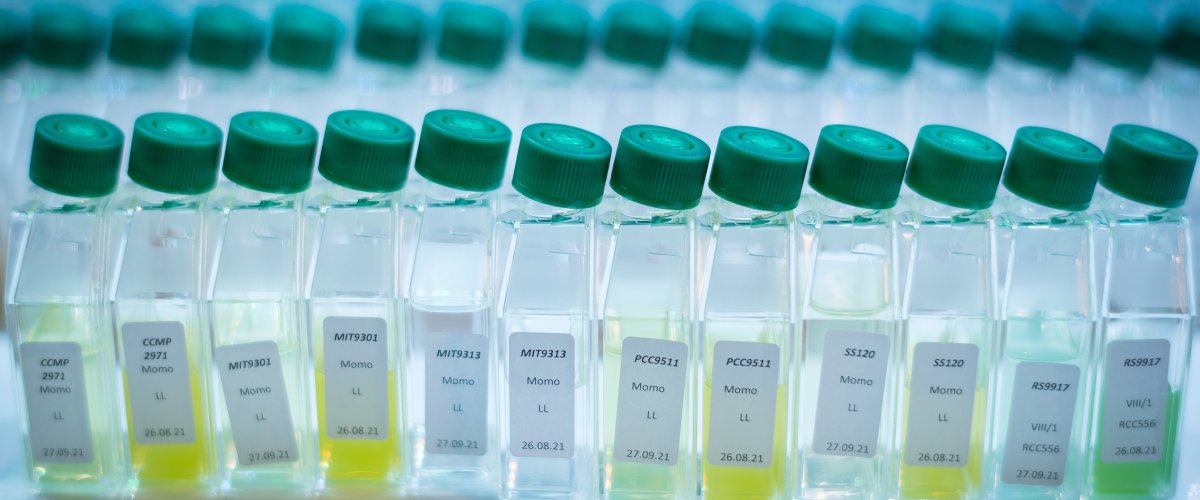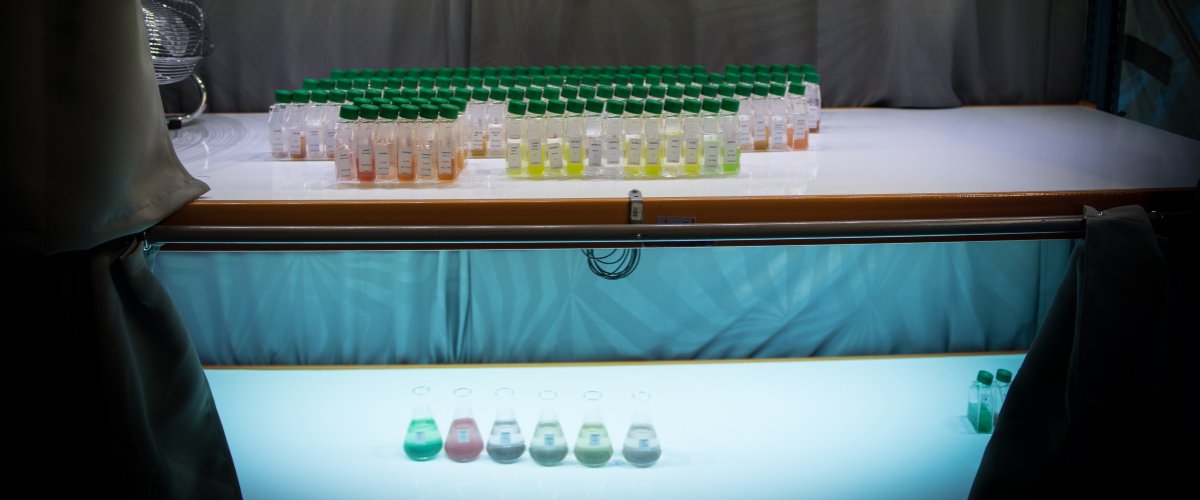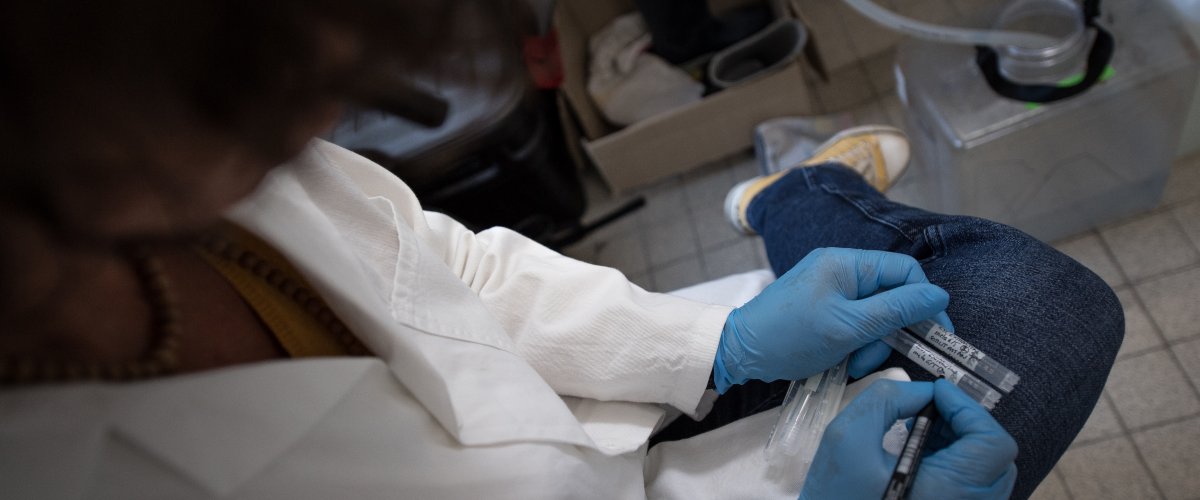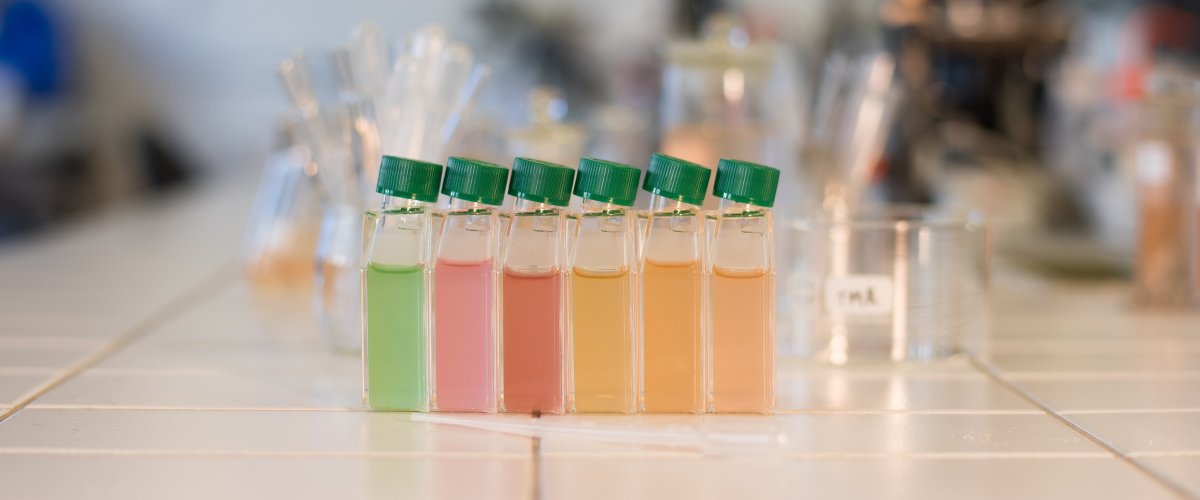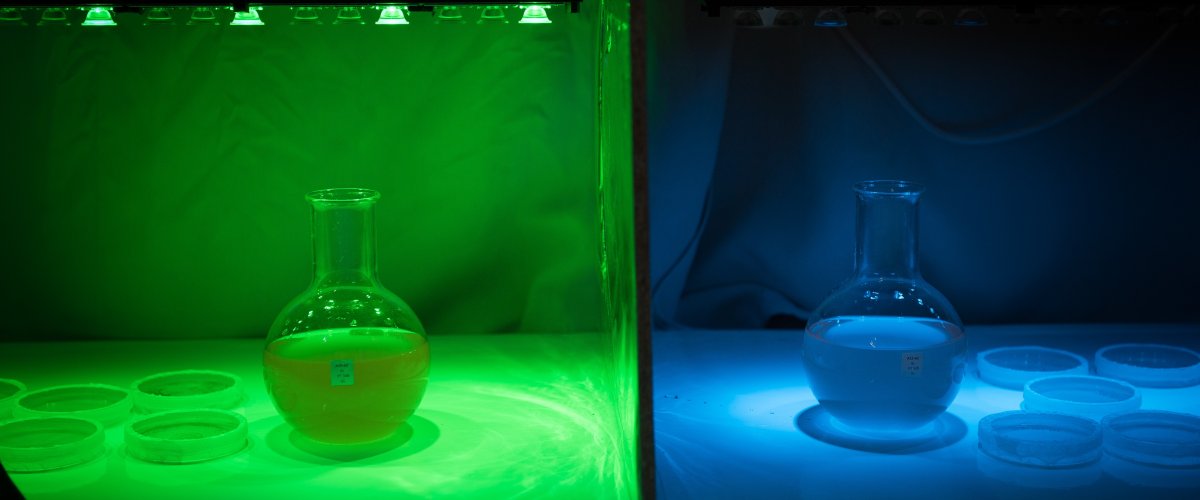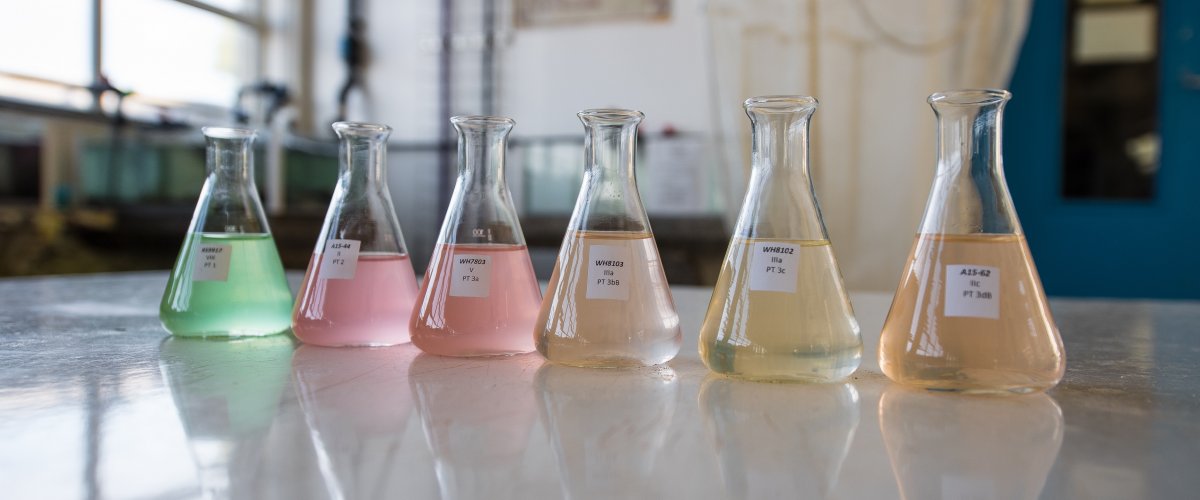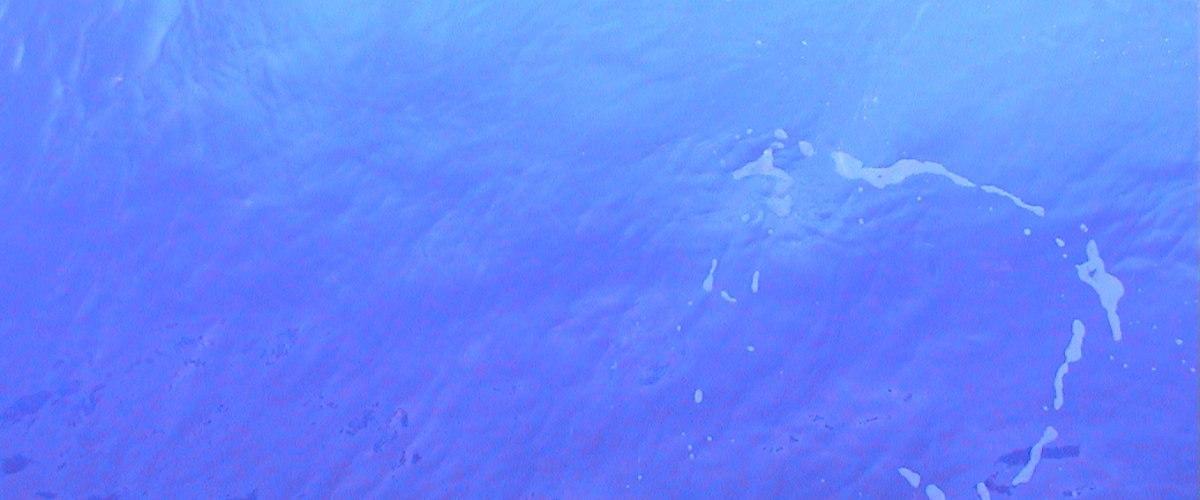Laurence Garczarek
Directeur.trice de recherche CNRS

I am a research scientist at CNRS since 2003 and leader of the MaPP team. My main research interest lies in understanding the genetic and functional diversity of marine picocyanobacteria and the consequences on their adaptation/acclimation capacity to various environmental factors
MAJOR CURRENT RESEARCH PROJECTS
- ANR SEASONING (2025-29, PI: S. Chaffron)
Community metabolic modelling of marine microbial plankton interactions in space and time - FEDER Porteurs d’Océans
Sensibilisation à la biodiversité marine et aux enjeux en lien avec les changements en cours - ANR TaxCy (2024-28, PI: L Garczarek)
An integrative taxonomy to unravel the links between ecology and evolution in a-cyanobacteria, a major component of aquatic microbial communities - PPR FUTURE-OBS (2023-29; coord: E. Thiebaut/F. Not; partner WP2):
Augmented observatory for coastal socio-ecosystems - Tara Europa/TREC (2023-26; partner):
A multi-year seasonal sampling along a land-to-sea transect - BIOcean5D (2022-26 ; coord: E. Heard; Horizon Europe, partner)
Marine biodiversity assessment and prediction across spatial and human scales - EMO-BON (2021-31; EMBRC-ERIC, partner)
European Marin Omics - Biodiversity Observatory Network - ANR EFFICACY (2020-25, PI: L Garczarek and F Partensky)
An integrative taxonomy to unravel the links between ecology and evolution in a-cyanobacteria, a major component of aquatic microbial communities - ANR TONGA (2019-23, role: Local coordinator, PI: Cécile Giueu and Sophie Bonnet))
Shallow hydroThermal sOurces of trace elemeNts: potential impacts on biological productivity and the bioloGicAl carbon pump
MAIN SCIENTIFIC INTEREST
- Diversity and ecology of marine photosynthetic prokaryotes
- Genomics, genetics and evolution of marine picocyanobacteria
- Physiology and regulation of the response to environmental stresses
COLLABORATIONS
- Silvia Acinas, ICM−CSIC, Spain
- David J. Scanlan, Univeristy of Warwick, UK
- David Kehoe, Indiana University, USA
- Damien Eveillard and Samuel Chaffron, University of Nantes, France
- Julia Uitz and Cécile Guieu, Laboratoire d’Océanographie de Villefranche
- Stephanie Dutkiewicz, Department of Earth, Atmospheric and Planetary Sciences, MIT Boston, USA
- Jeff Huisman, University of Amsterdam, Netherlands
- Hélène Morlon, Center for Computational Biology, ENS, Paris
- Sophie Bonnet, Mediterranean Institute of Oceanography - M.I.O, Marseille
PHD STUDENTS
- 2024-27 Perrine Kergoat, Sorbonne Université (co-direction with J. Bernardes)
- 2019-23 Louison Dufour, Sorbonne Université (co-direction with F. Partensky)
- 2018-22 Mathilde Ferrieux, Sorbonne Université (co-direction with F. Partensky)
- 2017-20 Ulysse Guyet, Sorbonne Université (co-direction with D. Eveillard)
- 2015-17 Hugo Doré, UPMC
- 2015-17 Théophile Grébert, UPMC (co-direction with F. Partensky)
- 2011-15 Gregory Farrant, UPMC
- 2009-13 Florian Humily, UPMC (co-direction with F. Partensky)
- 2007-10 Daniella Mella, UPMC
- 2006-10 Christian Kolowrat (co-direction with F. Partensky)
- 2004-06 Ludovic Joubin, UPMC
POST-DOCS
- 2024-25 Francesco Mattei (ANRs EFFICACY/TAXCY)
- 2023-25 Emile Faure (ANR EFFICACY/Institut de l'Ocean)
- 2020-22 Jade Leconte (ANRs CINNAMON/EFFICACY)
- 2018-21 Francisco Cornejo Catillo (Marie Curie Fellowship)
- 2018-21 Gregory Farrant (SAD Region Bretagne/Assemble Plus)
- 2018-19 Hugo Doré (ANR CINNAMON)
- 2014-16 Ngoc AN Nguyen (SAD Région Bretagne / ANR SAMOSA)
- 2006-08 Christophe Boutte (SAD Région Bretagne)
- 2006-08 Nicolas Blot (ANR MetaSyn, co-direction with F. Partensky)
- 2003-06 Julia Holtzendorff (EU Margenes Project, co-direction with F. Partensky)
Publications
COMPARATIVE GENOMICS
• Garczarek L, Guyet U, Doré H, Farrant GK, Hoebeke M, Brillet-Guéguen L, Bisch A, Jukka Siltanen, Corre E, Le Corguillé G, Caron C, Ratin M, Pitt FD, Ostrowski M, Conan M, Siegel A, Labadie K, Aury JM, Wincker P, Scanlan DJ and Partensky F. 2021.
Cyanorak v2.1: a scalable information system dedicated to the visualization and expert curation of marine and brackish picocyanobacteria genomes. NAR Database issue 10.1093/nar/gkaa958
• Doré H, Farrant GK, Guyet U, Haguait J, Humily F, Ratin M, Pitt F, Ostrowski M, Six C, Brillet-Guéguen L, Hoebeke M, Bisch A, Lecorguillé G, Corre E, Labadie K, Aury JM, Wincker P, Dong HC, Jae HN, Eveillard D, Scanlan DJ, Partensky F and Garczarek L. 2020.
Evolutionary mechanisms of long-term genome diversification associated with niche partitioning in marine picocyanobacteria. Frontiers in Microbiology doi.org/10.3389/fmicb.2020.567431.
• Farrant, GK, Hoebeke, M., Partensky, F., Andres, G. and Garczarek, L. 2015.
WiseScaffolder: an algorithm for the semi-automatic scaffolding of Next Generation Sequencing data. BMC Bioinformatics 16:281.
• Dufresne, A., Ostrowski, M., Scanlan, D. J., Garczarek, L., Mazard, S., Palenik, B. P., Paulsen, I. T., Tandeau de Marsac, N., Wincker, P., Dossat, C., Ferriera, S., Johnson, J., Post, A. F., Hess, W. R. & Partensky, F. 2008.
Unraveling the genomic mosaic of a ubiquitous genus of marine cyanobacteria. Genome Biology 9:R90. 16pp (FI=6,153).
• Six C., Thomas J.-C., Dufresne A., Garczarek L., Ostrowski M., Scanlan D.J., Arrouy N. & Partensky F. 2007.
Genes encoding phycobilisome components of marine Synechococcus cyanobacteria have evolved independently from the core genome. Genome Biology 8(12):R259, 22pp (FI=6,153).
• Dufresne, A., Garczarek L. et Partensky F. 2005.
Accelerated evolution associated with genome reduction in a free-living prokaryote. Genome Biology 6:R14 (10 pp.) (IF: 6.153).
GENETIC DIVERSITY AND GEOGRAPHICAL DISTRIBUTION
• Ying Ong DR, Gutiérrez-Rodríguez A, Garczarek L, Marie D, and Lopes dos Santos A.
Nested PCR approach for petB gene metabarcoding of marine Synechococcus. Microbiology Spectrum 11(2). https://doi.org/10.1128/spectrum.04086-22.
• Bonnet S., Benavides M., Le Moigne F.A.C, Camps M., Torremocha A., Grosso O., Spungin D., Berman-Frank I., Garczarek L. and Cornejo-Castillo F.M. (2022).
Diazotrophs are overlooked contributors to carbon and nitrogen export to the deep ocean. ISME J https://doi.org/10.1038/s41396-022-01319-3
• Xia X., Partensky F., Garczarek L., Suzuki K., Guo C., Cheung S.Y. & Liu H.: 2017.
Phylogeography and pigment type diversity of Synechococcus cyanobacteria in surface waters of the northwestern Pacific Ocean. Environ. Microbiol.19: 142–158. http://doi.org/10.1111/1462-2920.13541
• Paulsen M.L., Bratbak G., Doré H., Garczarek L., Seuthe L., Müller O., Sandaa R.H., Larsen A. 2016.
Synechococcus in the Atlantic gateway to the Arctic Ocean. Frontiers in Marine Science http://doi.org/10.3389/fmars.2016.00191.
• Farrant GK, Doré H, Cornejo-Castillo FM, Partensky F, Ratin M, Ostrowski M, Pitt FD, Wincker P, Scanlan DJ, Iudicone D, Acinas SG, Garczarek L 2016
Delineating ecologically significant taxonomic units from global patterns of marine picocyanobacteria. Proc Natl Acad Sci USA doi/10.1073/pnas.1524865113
• Mella-Flores D., Mazard S., Humily S., Partensky F., Mahé F., Bariat L., Courties C., Marie D., Ras J., Mauriac R., Jeanthon C., Bendif E.M., Ostrowski M., Scanlan D.J., Garczarek L. 2011.
Is the distribution of Prochlorococcus and Synechococcus ecotypes in the Mediterranean Sea affected by global warming? Biogeosciences 8, 2785–2804.
• Partensky, F. and Garczarek L. 2011.
Arms race in a drop of sea water. Nature 474:582-583. (commentaire invité d'article dans la section "News and Views")
• Garczarek, L., Hess, W., Holtzendorff, J., van der Staay, G.W.M., Partensky, F., 2000.
Multiplication of antenna genes as a major adaptation to low light in a marine prokaryote. Proceedings of the National Academy of Sciences of USA 97: 4098 -4101
META-OMICS AND FUNCTIONNAL DIVERSITY
• Pavloudi C, Santi I, Azua I, […] Garczarek L et al.,.
First release of the European marine omics biodiversity observation network (EMO BON) shotgun metagenomics data from water and sediment samples. ARPHA Preprints. https://doi.org/10.3897/arphapreprints.e146366. Biodiversity Data Journal, https://doi.org/doi: 10.3897/BDJ.13.e143585
• Doré F, Guyet U, Leconte J, Farrant GK, Ratin M, Ostrowski M, Ferrieux M, Lecorguillé G, Corre E, Labadie K, Aury JM, Wincker P, Eveillard D, Scanlan DJ, Partensky F and Garczarek L (2023).
Differential global distribution of marine picocyanobacteria gene clusters reveals distinct niche-related adaptive strategies.. ISME J 17:720–732 https://doi.org/10.1038/s41396-023-01386-0.
• Doré H., Breton S., Pittera J., Hoebeke M., Corre M., Ratin M., Scanlan D.J., Partensky F., Six C. and Garczarek L. (2022).
Global distribution of marine Synechococcus populations in coastal areas from Ocean Sampling Day metagenomes. bioRxiv preprint doi: https://doi.org/10.1101/2022.08.17.504260; in revision for mSystems).
• Caputi, L., [..], Garczarek L., d'Ortenzio F., Testor P., Not F., Ribera d'Alcalà, M., Wincker P., Bowler C., Iudicone D. 2019.
Community-level response to natural perturbations in open ocean planktonic ecosystems. Global Biogeochemical Cycles DOI: 10.1029/2018GB006022
• Villar E, Farrant G, Follows M, Garczarek L, Speich S, Audic S, Bittner L, Blanke B, Brum JR, Brunet C, et al. 2015.
Environmental disturbance in Agulhas rings affects inter-ocean plankton dispersal. Science 348: 6237 p1261447-1.
• Mazard, S., Ostrowski, M., Garczarek,, L., Scanlan, D.J. 2011.
A targeted metagenomic approach to determine the ‘population genome’ of marine Synechococcus. In Handbook of Molecular Microbial Ecology II: Metagenomics in Different Habitats. F. J. de Bruijn (Editor).
• Humily F. Farrant, G.K., Marie D., Partensky F., Mazard S., Perennou M., Labadie K., Aury J.M., Wincker P., Nicolas Segui A., Scanlan D.J. and Garczarek L. 2014.
Development of a targeted metagenomic approach to study a genomic region involved in light harvesting in marine Synechococcus. FEMS Microbiol. Ecol., 88 231–249.
MODELING
• Mattei F, Hickman AE, Uitz J, Dufour L, Vellucci V, Garczarek L, Partensky F, Dutkiewicz S.
Chromatic acclimation shapes phytoplankton biogeography. Sciences Advances 11: eadr9609 (2025) https://www.science.org/doi/full/10.1126/sciadv.adr9609.
• Holtrop T, Huisman J, Stomp M, Aert J, Grébert T, Partensky F, Garczarek L& Jan van der Woerd H.
H2O’s molecular vibrations shed light on spectral niches for photosynthesis in lakes and oceans. Nature Communications 5:55-66. https://doi.org/10.1038/s41559-020-01330-x.
PHYSIOLOGY
• Dufour L, Garczarek L, MatteiF, Gouriou B, Clairet J, Ratin M, Kehoe DM, Huisman J, Verspagen J and Partensky F.
Competition for light color between marine Synechococcus strains with fixed and variable pigmentation. BiorXiv and AEM 2025. https://doi.org/10.1101/2025.01.17.633661.
• Dufour L, Garczarek L, Gouriou B, Clairet J, Ratin M, Partensky F.
Differential acclimation kinetics of the two forms of type IV chromatic acclimaters occurring in marine Synechococcus cyanobacteria. Frontiers in Microbiology 15: https://doi.org/10.3389/fmicb.2024.1349322.
• Alonso-Sáez L, Palacio AS, Cabello AM, Robaina-Estévez S, González JM, Garczarek L, López-Urrutia A5.
Transcriptional mechanisms of thermal acclimation in Prochlorococcus. mBio 14(3). https://doi.org/10.1128/mbio.03425-22
• Ferrieux M., Dufour L., Ratin M., Leconte J., Guéneuguès A., Chasselin L., Sciandra T., Doré H., Monier G., Della-Negra O., Guyet U., Siltanen J., Hoebeke M., Corre E., Xia X., Liu H., Six C., Bouget F.-Y., Blain S., Partensky F. and Garczarek L. (2022).
Comparative thermophysiology of the low-iron adapted marine Synechococcus CRD1 strains. Frontiers in Microbiology 13:893413. https://doi.org/10.3389/fmicb.2022.893413.
• Haney A. M., Sanfilippo J.E., Garczarek L., Partensky P., and Kehoe D.M. (2022).
DNA Photolyases provide important protection from UV radiation in the marine picophytoplankton Synechococcus. mBio 13(4). https://doi.org/10.1128/mbio.01511-22.
• Guyet U, Nguyen NA, Doré H, Haguait J, Pittera J, Conan M, Ratin M, Corre E, Le Corguillé G, Brillet-Guéguen L, Hoebeke M, Six C, Steglich C, Siegel A, Eveillard D, Partensky F and Garczarek L. 2020
Synergic effects of temperature and irradiance on the physiology of the marine Synechococcus strain WH7803. Frontiers in Microbiology section Aquatic Microbiology doi:10.3389/fmicb.2020.01707
• Palacio AS, Cabello AM, García FC, Labban A, Morán XAG, Garczarek L, Alonso-Sáez L and López-Urrutia A. 2020
Changes in population age-structure obscure the temperature-size rule in marine cyanobacteria. Frontiers in Microbiology section Aquatic Microbiology doi.org/10.3389/fmicb.2020.02059.
• Breton S, Jouhet J, Guyet U, Gros V, Pittera J, Demory D, Partensky F, Doré H, Ratin M, Maréchal E, Nguyen NA, Garczarek L & Six C. 2019
Unveiling membrane thermoregulation strategies in marine Synechococcus temperature ecotypes. Submitted to the New Phytologist doi.org/10.1111/nph.16239.
• Pittera J., Jouhet J., Breton S., Garczarek L., Partensky F., Maréchal E., Nguyen N.A, Doré H., Ratin M. Pitt F.D., Scanlan D.J. and Six C. 2017.
Thermoacclimation and genome adaptation of the membrane lipidome in marine Synechococcus. Environ Microbiol. doi: 10.1111/1462-2920.13985
• Partensky F., Six C, Ratin M., Garczarek L., Vaulot D., Probert I., Calteau A, Gourvil P., Marie D., Grébert T., Bouchier C., Le Panse S., Gachenot M., Rodríguez F. and Garrido J.L. 2018.
A novel species of the marine cyanobacterium Acaryochloris with a unique pigment content and lifestyle. Sci Rep. 2018 8:9142. doi: 10.1038/s41598-018-27542-7.
• Partensky F., Mella-Flores D., Six C., Garczarek L., Czjzek M., Kotabova E., Felcmanová K., and Prasil O. 2018.
Comparison of photosynthetic performances of marine picocyanobacteria with different configurations of the oxygen-evolving complex. Photosynth Res. 2018 Jun 25. doi: 10.1007/s11120-018-0539-3.
• Perez Sepulveda B., Pitt F., N’Guyen A.N., Ratin M., Garczarek L., Millard A., Scanlan D.J. 2018
Relative stability of ploidy in a marine Synechococcus across various growth conditions. Submitted to Environmental Microbiology Report doi:10.1111/1758-2229.12614
• Pittera J., Humily F, Ratin M., Thorel M. ., Garczarek L., & Six C. 2014.
Connecting thermal physiology and latitudinal niche partitioning in marine Synechococcus. ISME J. 1–16.
• Mella-Flores D., Six C., Ratin M., Partensky F., Boutte C., Le Corguillé G., Marie D., Blot N., Gourvil P., Kolowrat C., Garczarek L. 2012.
Prochlorococcus and Synechococcus have evolved different adaptive mechanisms to cope with light and UV stress. Frontiers in Aquatic Microbiology 3:285.
• Blot, N., D. Mella-Flores, C. Six, G. Lecorguille, C. Boutte, A. Peyrat, A. Monnier, M. Ratin, P. Gourvil, D. A. Campbell and L. Garczarek. 2011.
Light history influences the response of the marine cyanobacterium Synechococcus sp. WH7803 to oxidative stress. Plant Physiology 156: 1934-1954 (FI= 6.451).
• Blot, N., Wu, X.-J., Thomas, J.-C., Zhang, J., Garczarek, L., Böhm, S., Tu, J. M., Zhou, M., Plöscher, M., Eichacker, L., Partensky, F., Scheer, H. & Zhao, K. H. 2009.
Phycourobilin in a unique trichromatic phycobiliprotein is formed post-translationally by a novel phycoerythrobilin lyase-isomerase. Journal of Biological Chemistry 284:9290–9298.
• Garczarek, L., Dufresne, A., Blot, N., Cockshutt, A.M., Peyrat, A., Campbell, D.A., Joubin, L & Six, C. 2008.
Function and evolution of the psbA gene family in marine Synechococcus: Synechococcus sp. WH7803 as a case study. ISME journal.
PIGMENT TYPES DIVERSITY AND DISTRIBUTION
• Grébert T., Garczarek L., Daubin V., Humily F., Marie D., Ratin M., Devailly A., Farrant G. K., Mary I., Mella-Flores D., Tanguy G., Labadie K., Wincker P., Kehoe D.M. and Partensky F. (2022).
Diversity and evolution of pigment types and the phycobilisome rod gene region of marine Synechococcus cyanobacteria. Genome Biology and Evolution 111: evac035, https://doi.org/10.1093/gbe/evac035.
• Grébert T., Nguyen A.A., Pokhrel S., Joseph K.L., Ratin M., Dufour L., Chen B., Haney A.M., Trinidad J., Karty J.A., Trinidad J.C., Garczarek L., Schluchter W.M., Kehoe D.M. & Partensky F. 2021.
Molecular basis of an alternative dual-enzyme system for light color acclimation of marine Synechococcus cyanobacteria. Proc Natl Acad Sci USA. 2021 118 (9) https://doi.org/10.1073/pnas.2019715118 63.
• Carrigee LA, Frick JP, Karty JA, Garczarek L, Partensky F, and Schluchter WM. 2021.
MpeV is the Lyase isomerase for the doubly-linked phycourobilin on the β-subunit of phycoerythrin I & II in marine Synechococcus. JBC doi: 10.1074/jbc.RA120.015289.
• Holtrop T, Huisman J, Stomp M, Aert J, Grébert T, Partensky F, Garczarek L& Jan van der Woerd H. (2020).
H2O’s molecular vibrations shed light on spectral niches for photosynthesis in lakes and oceans. Nature Ecology and Evolution 5:55-66. https://doi.org/10.1038/s41559-020-01330-x.
• Sanfilippo JE, Nguyen AA, Garczarek L, Karty JA, Pokhrel S, Strnat JA, Partensky F, Schluchter WM, and Kehoe DM. 2019.
Interplay between differentially expressed enzymes contributes to light color acclimation in marine Synechococcus. Proc Natl Acad Sci USA 116 (13) 6457-6462; https://doi.org/10.1073/pnas.1810491116
• Grébert T., Doré H., Partensky F., Farrant G.K., Boss E., Picheral M., Guidi L., Pesant S., Scanlan D.J., Wincker P., Acinas S.G., Kehoe D.M. & Garczarek L. 2018.
Light color acclimation: a key process in the global ocean distribution of Synechococcus cyanobacteria. Proceedings of the National Academy of Sciences of the USA https://doi.org/10.1073/pnas.1717069115
• Perez Sepulveda B., Pitt F., N’Guyen A.N., Ratin M., Garczarek L., Millard A., Scanlan D.J. 2018.
Relative stability of ploidy in a marine Synechococcus across various growth conditions. Submitted to Environmental Microbiology Report doi:10.1111/1758-2229.12614.
• Mahmoud RM., Sanfilippo J.E, Nguyen A.A., Strnat J.A., Partensky F., Garczarek L., El-Kassem N.A. Kehoea D.M. and Schluchter M. 2017.
Adaptation to blue light in marine Synechococcus requires MpeU, an enzyme with similarity to phycoerythrobilin lyase isomerases. Frontiers in Microbiology (section Microbial Physiology and Metabolism). http://doi.org/10.3389/fmicb.2017.00243
• Sanfilippo JE, Nguyen AA, Karty JA, Shukla A, Schluchter WM, Garczarek L, Partensky F, Kehoe DM 2016.
A self-regulating genomic island encoding tandem regulators confers chromatic acclimation to marine Synechococcus. Proc Natl Acad Sci USA 113(21):6077-82.
• Humily F. Partensky F., Six C., Farrant, G.K., Ratin M., Marie D., and Garczarek L. 2013.
A gene island with two possible configurations is involved in chromatic acclimation in marine Synechococcus. PLOS One, vol 8, issue 12, e84459.
• Humily F. Farrant, G.K., Marie D., Partensky F., Mazard S., Perennou M., Labadie K., Aury J.M., Wincker P., Nicolas Segui A., Scanlan D.J. and Garczarek L. 2014.
Development of a targeted metagenomic approach to study a genomic region involved in light harvesting in marine Synechococcus. FEMS Microbiol. Ecol., 88 231–249.
• Kolowrat, C., Partensky, F., Mella-Flores, D., Le Corguillé, G., Boutte, C., Blot, N., Ratin, M., Ferréol, M., Lecomte, X., Gourvil, P., Lennon, J.F., Kehoe, D. and Garczarek, L. 2010
Ultraviolet stress delays chromosome replication in light/dark synchronized cells of the marine cyanobacterium Prochlorococcus marinus PCC9511. BMC Microbiology 10:204
REVIEWS / CHAPTERS
• Kehoe DM, Biswas A, Chen B, Dufour L, Grébert T, Haney AM, Joseph KL, Kumarapperuma I, Nguyen AA, Ratin M, Sanfilippo JE, Shukla A, Garczarek L, Yang X, Schluchter WM, Partensky F,
Light Color Regulation of Photosynthetic Antennae Biogenesis in Marine Phytoplankton, Plant and Cell Physiology: pcae115, https://doi-org.inee.bib.cnrs.fr/10.1093/pcp/pcae115
• Partensky F., Hess W.R. & Garczarek L. (2022).
Chapter 3. Marine cyanobacteria. In: The marine microbiome. Stal L.J. and Cretoiu M.S. (eds.). Springer International Publishing Switzerland. 2d edition. pp. 103-157. https://doi.org/10.1007/978-3-030-90383-1_3.
• Lopez Dos Santos_A., Not F., Garczarek L., Ribeiro C., Guitierez A., Vaulot D. (2021).
Use of metabarcoding in phytoplankton ecology in Advances in Phytoplankton Ecology: applications of emerging technologies, edit by Lesley Clementson, Ruth Eriksen and Anusuya Willis (CSIRO), https://www.elsevier.com/books/advances-in-phytoplankton-ecology/clementson/978-0-12-822861-6, Paperback ISBN: 9780128228616, eBook ISBN: 9780128230299.
• Sanfilippo JE, Garczarek L, Partensky F, and Kehoe DM 2019
Chromatic Acclimation in Cyanobacteria: A Diverse and Widespread Process for Optimizing Photosynthesis. Annual Review of Microbiology.
• Garczarek L. & Partensky F. « 40. 2019
Les apports de la méta-omique en écologie marine ». In D. Faure, D. Joly, S. Salamitou, 101 secrets de l’ADN, Paris : CNRS Éditions, ISBN: 9782271123237, pp.146-148.
• Partensky, F. et Garczarek, L., 2017
La couleur de l’eau dans L’océan à découvert - Écologie, environnement, sciences de la Terre, CNRS édition.
• Hess W.R., Garczarek L., Pfreundt U. & Partensky F. 2016.
Phototrophic Microorganisms: The Basis of the Marine Food Web. In: The Marine Microbiome: An Untapped Source of Biodiversity and Biotechnological Potential (Stal LJ, Cretoiu MS eds), pp. 57-97. Springer International Publishing: Cham, http://doi.org/10.1007/978-3-319-33000-6_3
• Garczarek L., Farrant G.K. and Partensky F., 2016
Génomique comparative et métagénomique des picocyanobactéries marines. Dans La Génomique Environnementales - La révolution du séquençage à haut débit, Chapitre XI, ISTE Edition, ISBN : 978-1-78405-151-8.
• Mazard, S., Ostrowski, M., Garczarek,, L., Scanlan, D.J. 2011.
A targeted metagenomic approach to determine the ‘population genome’ of marine Synechococcus. In Handbook of Molecular Microbial Ecology II: Metagenomics in Different Habitats. F. J. de Bruijn (Editor).
• Partensky, F. & Garczarek, L. 2010.
Prochlorococcus: Advantages and limits of minimalism. Annual review of Marine Science 2:305–31.
• Scanlan, D. J., Ostrowski, M., Mazard, S., Dufresne, A., Garczarek, L., Hess, W. R., Post, A. F., Hagemann, M., Paulsen, I. & Partensky, F. 2009.
Ecological genomics of marine picocyanobacteria. Microbiology and Molecular Biology Reviews 73: 249-299.
